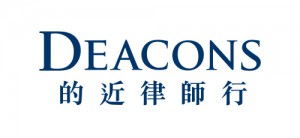13 May, 2020
Whilst crypto-assets are customarily associated with high volatility, a low-volatility crypto-asset, the so-called “stablecoin”, has emerged recently. Stablecoin initiatives typically aim to create a store of value backing the crypto-asset and means of exchange. In view of the increasing discussion of such initiatives, in particular with global technology firms contemplating the issuance of their own stablecoin (e.g Facebook’s “Libra”), regulators and the market should be ready for the regulatory challenges of stablecoin.
The International Organization of Securities Commissions (IOSCO) recently published a report(Report) on global stablecoin initiatives, in which it highlighted the risks and the corresponding regulations required to tackle such risks through a case study of a stablecoin (Coin) proposed to be issued by a private entity (Entity). In the hypothetical case, the Entity designs a platform using distributed ledger technology to issue the Coin which is intended to be used as a means of exchange on the Entity’s platform and accessible to third parties, whereas the price of the Coin is determined by the value of the assets backing the Coin (Reserve Fund) and the ongoing trading activities of the Coin. Such a scheme poses challenges for both financial and securities regulators.
From a financial regulatory perspective, if users can make payments using the Coin, regulations on the “front-end” are likely to be required as it could amount to the provision of banking, payment system or other types of financial infrastructure services. The potential anonymity of transactions which use stablecoin, as with any other crypto-assets, gives rise to the risk of financial crime. If the Coin were to be used on a large scale, it could even become systemically important mandating scrutiny from regulators.
From a “back-end” perspective, the Reserve Fund backing the Coin could mean that the Coin would need to be classified as a collective investment scheme, securitised product or other type of security. The participants who provide or facilitate the trading of the Coin could as such be deemed to be carrying on “regulated activities” for the purposes of the Securities and Futures Ordinance (Cap. 571). Therefore, regulators may wish to impose requirements concerning pre- and post-trade obligations, financial promotions, disclosure and regular and trigger-based reporting requirements on market participants such as trading platforms or intermediaries facilitating the trading or subscription of the Coin. These requirements would be necessary to protect the interests of customers and investors.
Given the significant impact which a widely adopted global stablecoin could have on market participants or even the financial markets generally, the Report stated that the IOSCO was ready to work with other international bodies to facilitate understanding of stablecoin proposals and risks, and would seek to provide a venue for regulators to discuss issues relevant to the supervision of a stablecoin ecosystem.
For further information, please contact:
Simon Deane, Partner, Deacons
simon.deane@deacons.com





